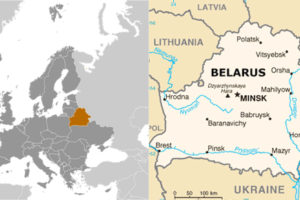Russia, Belarus Kick Off Massive Military Exercises Amid Tensions With West

(Article text ©2021 RFE/RL, Inc., Radio Free Europe/Radio Liberty – rferl.org – Sept. 10, 2021 – article text also appeared at rferl.org/a/russia-belarus-military-exercises-zapad/31453922.html)
Russia and Belarus have launched massive joint military drills near NATO’s borders as Moscow and Minsk vowed to deepen their military ties amid persistent tensions with the West.
The Zapad-2021 weeklong military exercises kicked off on September 10 and with venues including Belarus, Western Russia, and the Baltic Sea, the Russian Defense Ministry said.
Up to 200,000 servicemen, about 80 planes and helicopters, 290 tanks, 240 artillery pieces, multiple rocket launchers, and mortars, as well as 15 ships will be involved in this year’s drills, which are conducted every four years, according to Moscow.
What could be the biggest military exercises in Europe in decades have raised alarms at NATO, which says the Kremlin has refused to invite observers as it is obligated to do under an international agreement.
Russia and Belarus are formally part of a “union state” and have been in talks for years on further integration of their countries.
On the eve of the start of Zapad-2021, Russian President Vladimir Putin and Belarus’s increasingly isolated authoritarian ruler, Alyaksandr Lukashenka, met in Moscow where they agreed to deepen the integration of their ex-Soviet countries, including in areas of defense.
Putin said Moscow would provide Minsk with around $640 million in loans by the end of next year, and that he agreed with Lukashenka on a new unified natural-gas market.
Putin, in power for more than 20 years, and Lukashenka, in power for nearly three decades, also discussed “building a single defense space,” the Russian president said.
For his part, Lukashenka told reporters there was a “breakthrough” and that 28 separate “road maps” had been agreed to after many years of negotiations.
However, the two leaders sidestepped the question of whether after more than 20 years of talks, they had finally agreed to fully create a “union state” — a major step toward reunifying the two ex-Soviet republics’ economies and political structures.
If it comes to fruition, the union state would potentially undermine Belarus’s sovereignty, something Lukashenka has strenuously resisted for years.
But the Belarusian ruler has been increasingly isolated since last year’s presidential election in which he claimed reelection to a sixth term.
The vote was condemned by Belarus’s opposition as rigged and prompted months of street protests that Belarusian security forces have harshly cracked down on.
Western nations have refused to recognize Lukashenka as a legitimate president and slapped his government with sanctions.
Meanwhile, tensions along Belarus’s border with the European Union have risen in recent months with Brussels accusing Minsk of intentionally sending thousands of migrants into bloc through Latvia, Lithuania, and Poland.
Russia’s relations with the West have also been tense in recent years over a host of actions by Moscow, including aggression against Ukraine, election interference, state-sponsored hacking, and human rights abuses at home.
